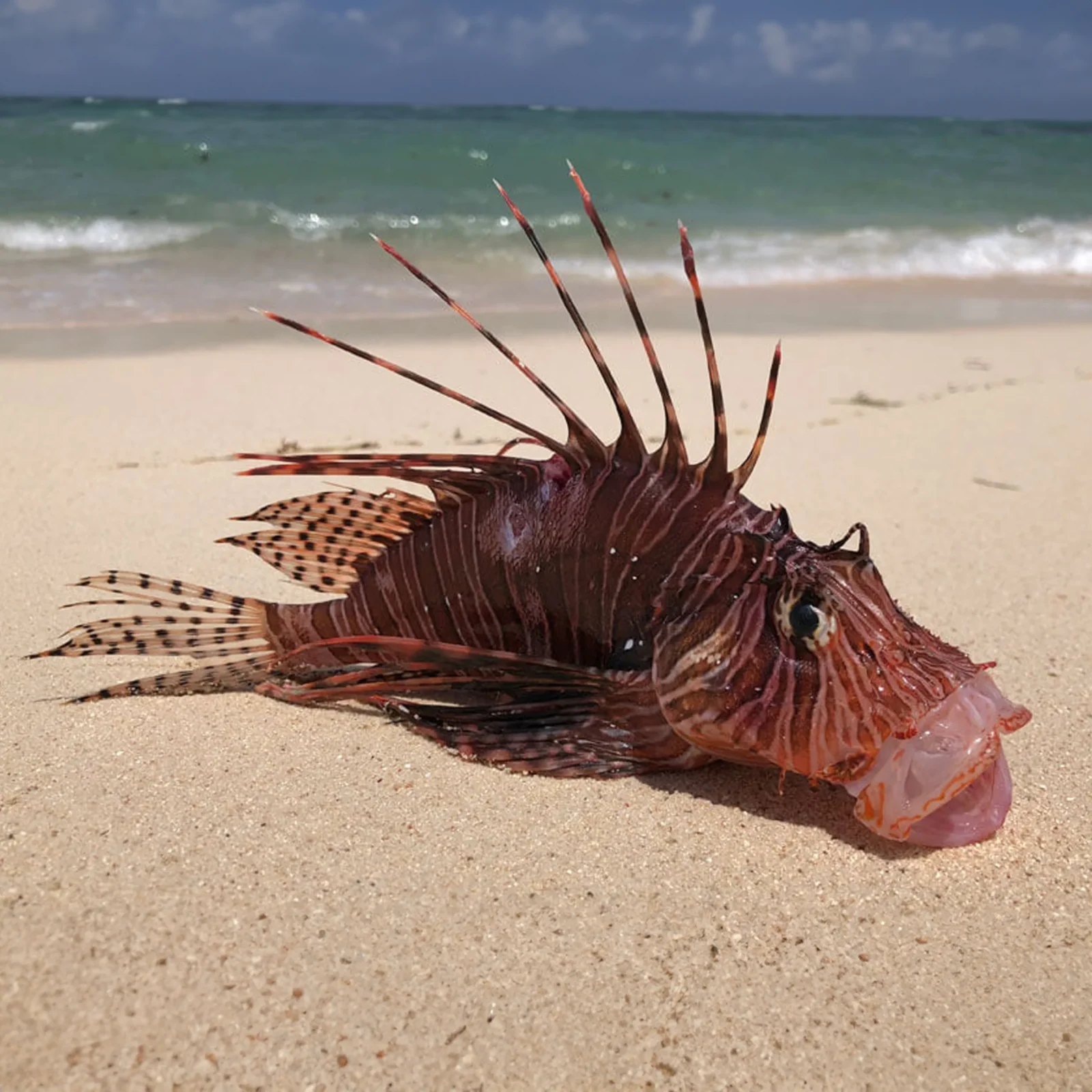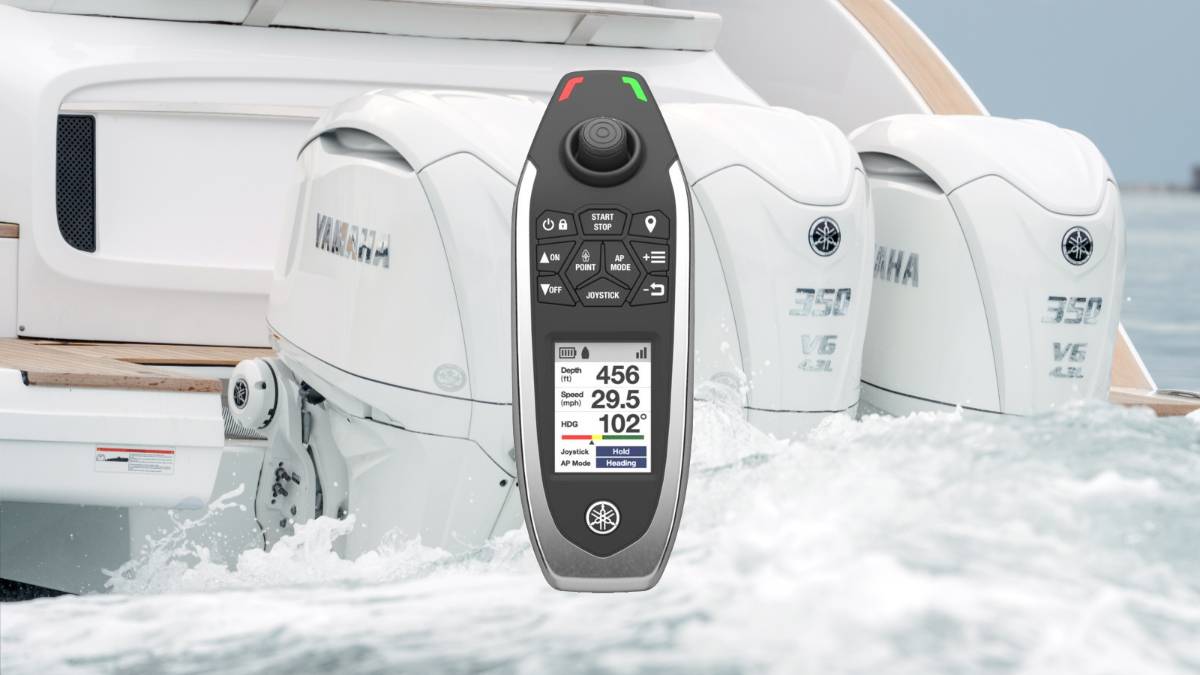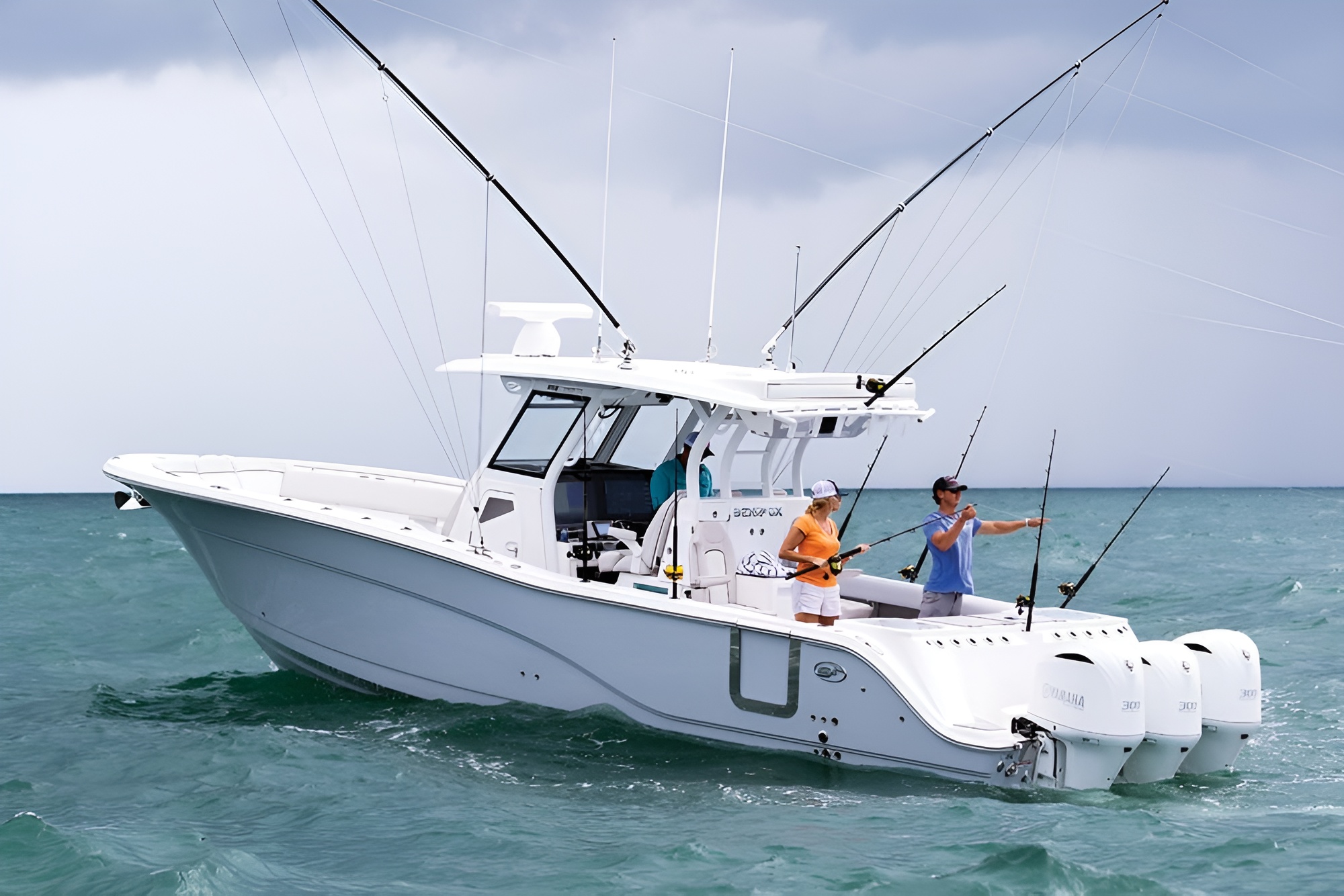Anchors Aweigh on Invasive Species: Your Role in Preserving Florida’s Vibrant Marine Ecosystem
A balmy sun gently dips beneath the horizon as you coast on the turquoise-blue carpet that is Florida’s vibrant marine ecosystem. As home to some of the most diverse marine habitats globally, Florida holds a unique charm that is effortless and captivating. Sadly, the tranquility of these exclusive waters is under threat from invasive species.
Invasive Species and the Spoiled Party
Invasive species are non-native critters that wreak havoc when introduced to new ecosystems. They reproduce quickly, outcompete native species for resources, and upset the delicate balance of the marine ecosystem.
Index
1. Florida’s V.I.G. List (Very Invasive Guests)
African Jewelfish
Asian Grass Carp
Asian Swamp Eel
Armored Catfish
Bluegill
Blue Tilapia
Clown Featherback
Lionfish
Oscar Fish
Snakeheads
Northern Snakehead
African Snakehead
Walking Catfish
2. What’s being done about invasive marine species?
3. Your Role: Essential Measures for Boaters
Regular Inspection and Clean-up
Effluent Management
Stay Informed
Reporting Invasive Species
4. Finding the Perfect Boat for Responsible Boating
Florida’s V.I.G. List (Very Invasive Guests)
Florida’s coastal waters are home to various invasive fish species that have significantly impacted local ecosystems and native fish populations. These species, often introduced through aquarium releases, escape from aquaculture, or other human activities, find Florida’s warm waters conducive to rapid growth and spread. Some of the notable invasive fish species in Florida include:
African Jewelfish (Hemichromis letourneuxi):
The African Jewelfish, originating from West Africa’s rivers and lakes, has made its unwelcome home in Florida’s freshwater systems. Valued in the aquarium trade for its vibrant colors, this species disrupts local ecosystems by competing aggressively with native fish for food and habitat. Its ability to adapt to various environmental conditions has facilitated its spread, posing significant challenges to conservation efforts and native biodiversity.

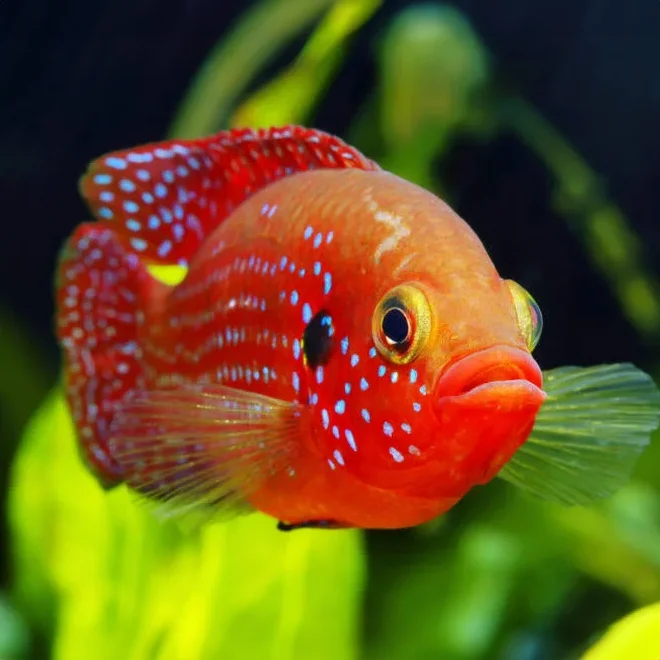
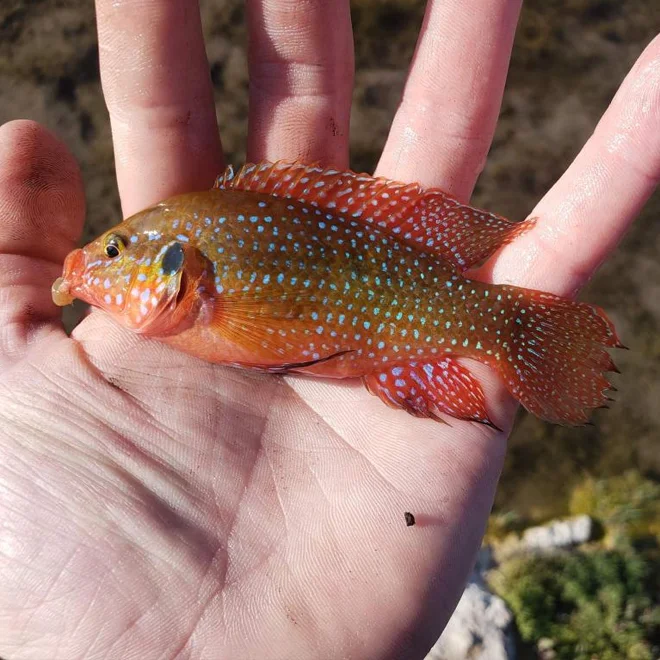
Asian Grass Carp (Ctenopharyngodon idella):
Introduced as a biological control method for aquatic weeds, the Asian Grass Carp, from the Pacific Far East, has become an invasive menace in North American waterways. While initially hailed for its vegetation-consuming capabilities, its lack of selectivity in diet leads to the depletion of native plant species essential for the aquatic food web and habitat. This disrupts ecosystems and outcompetes native species, prompting concerns over its environmental impact.
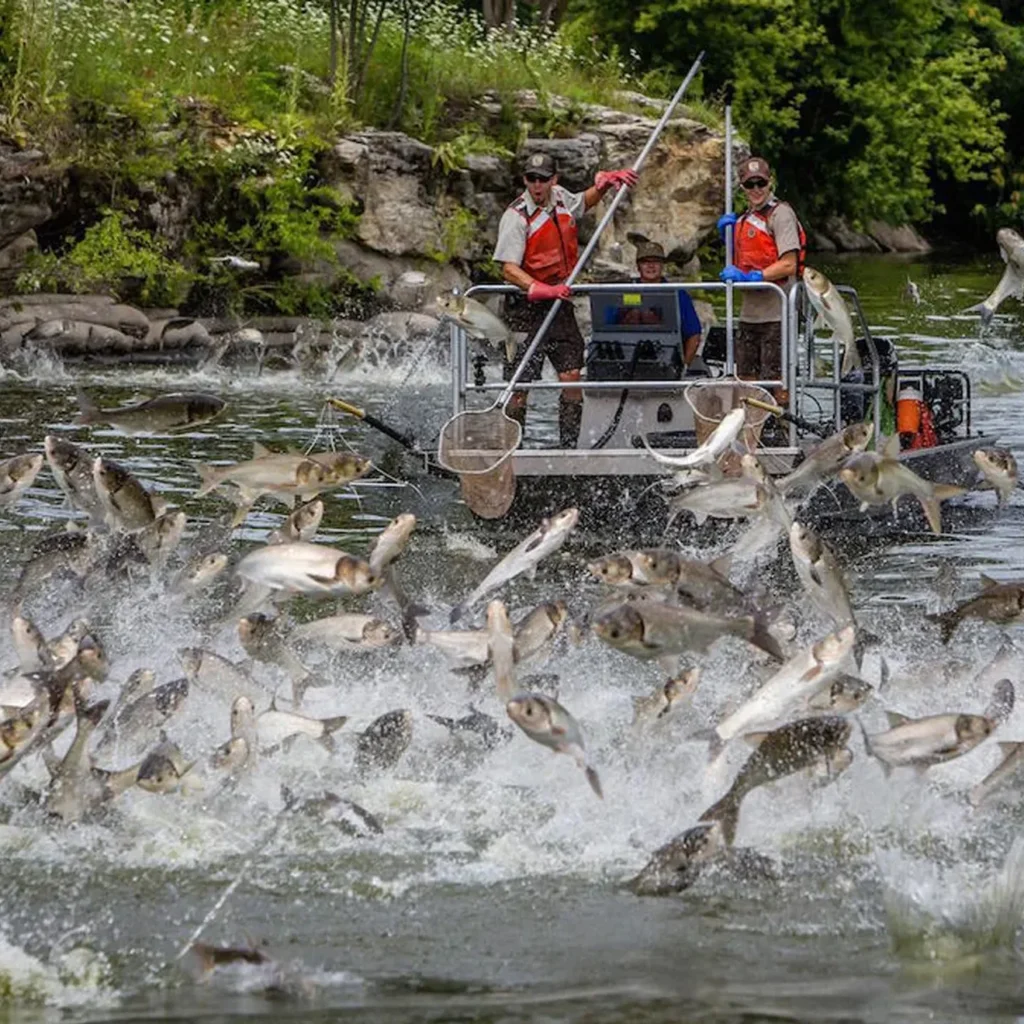
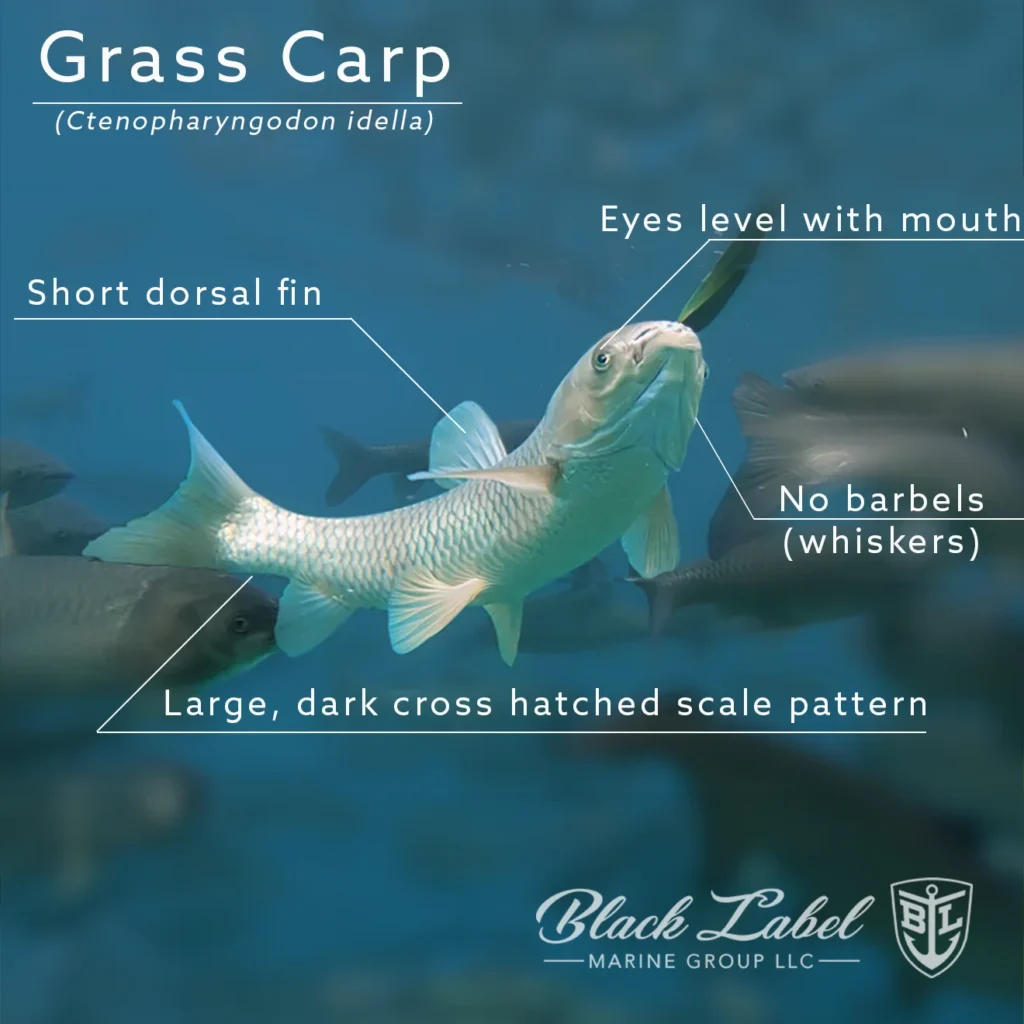
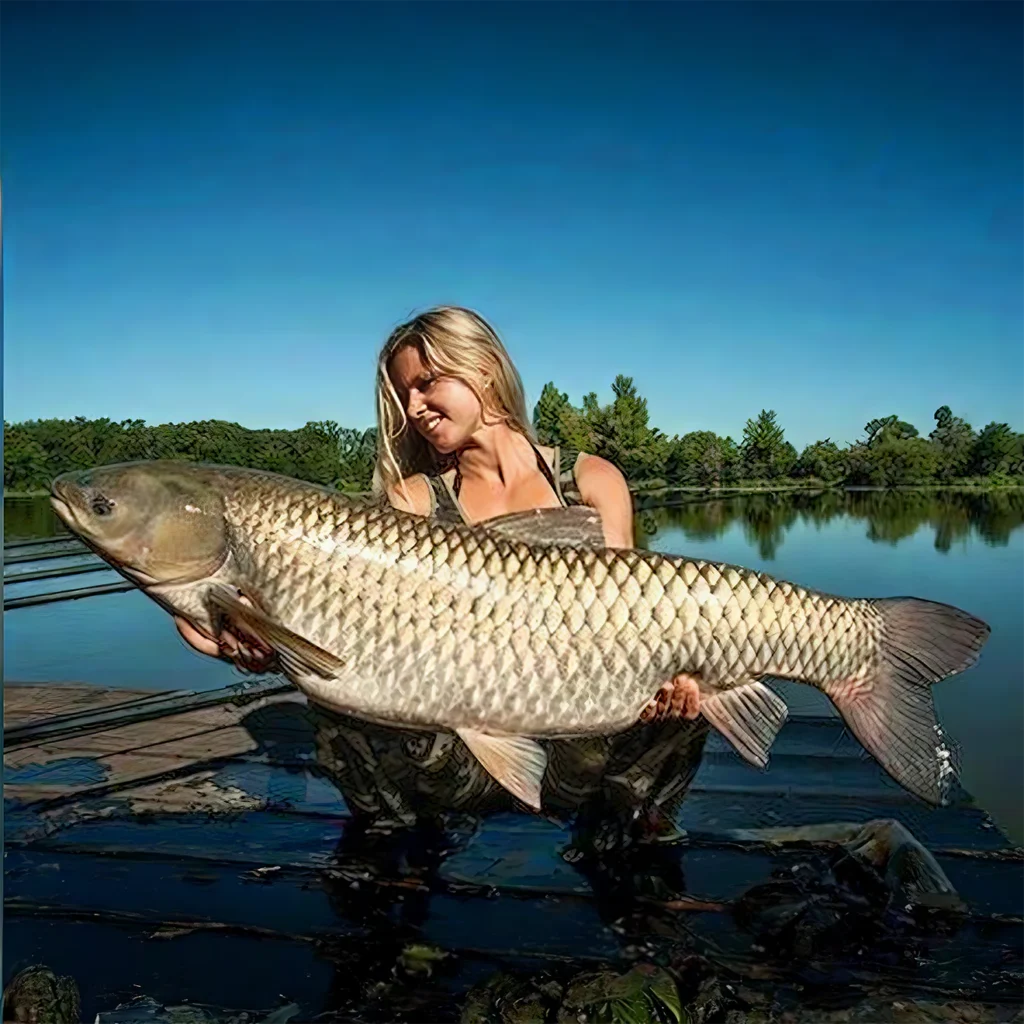
Asian Swamp Eel (Monopterus albus):
The Asian Swamp Eel, with its origins in Southeast Asia, presents a unique invasive threat in Florida’s water bodies. Capable of breathing air and moving across land, it colonizes diverse aquatic environments, preying on native fish and invertebrates. Its adaptability and broad diet make it a formidable invader, challenging to control and capable of altering ecosystem dynamics significantly.
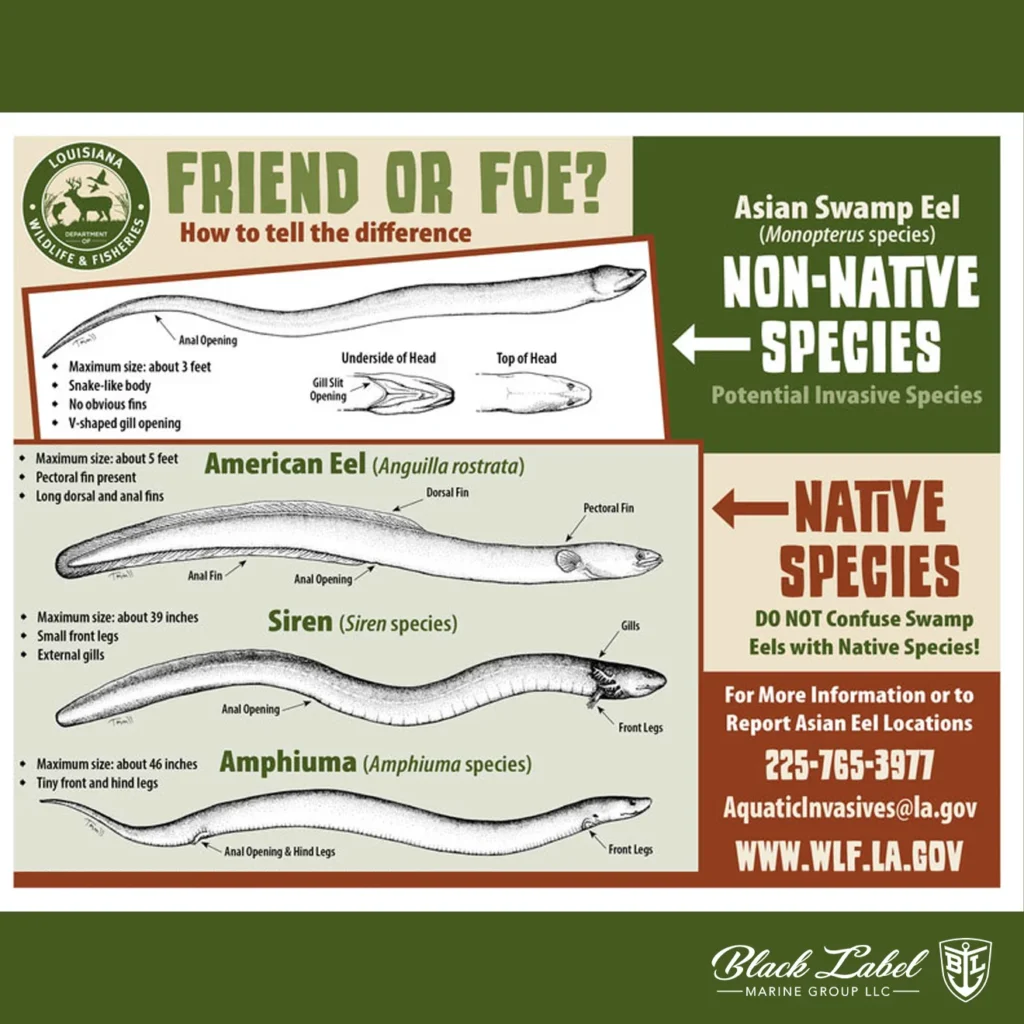
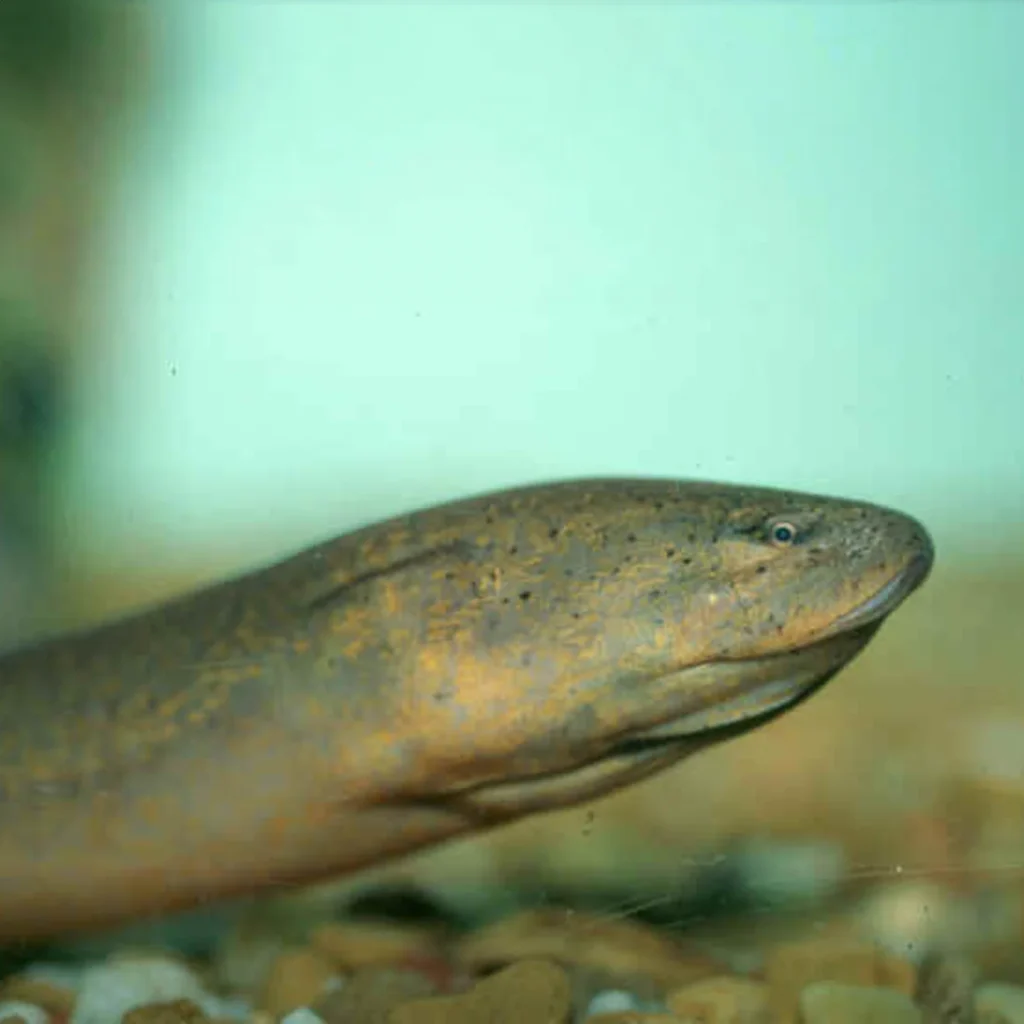
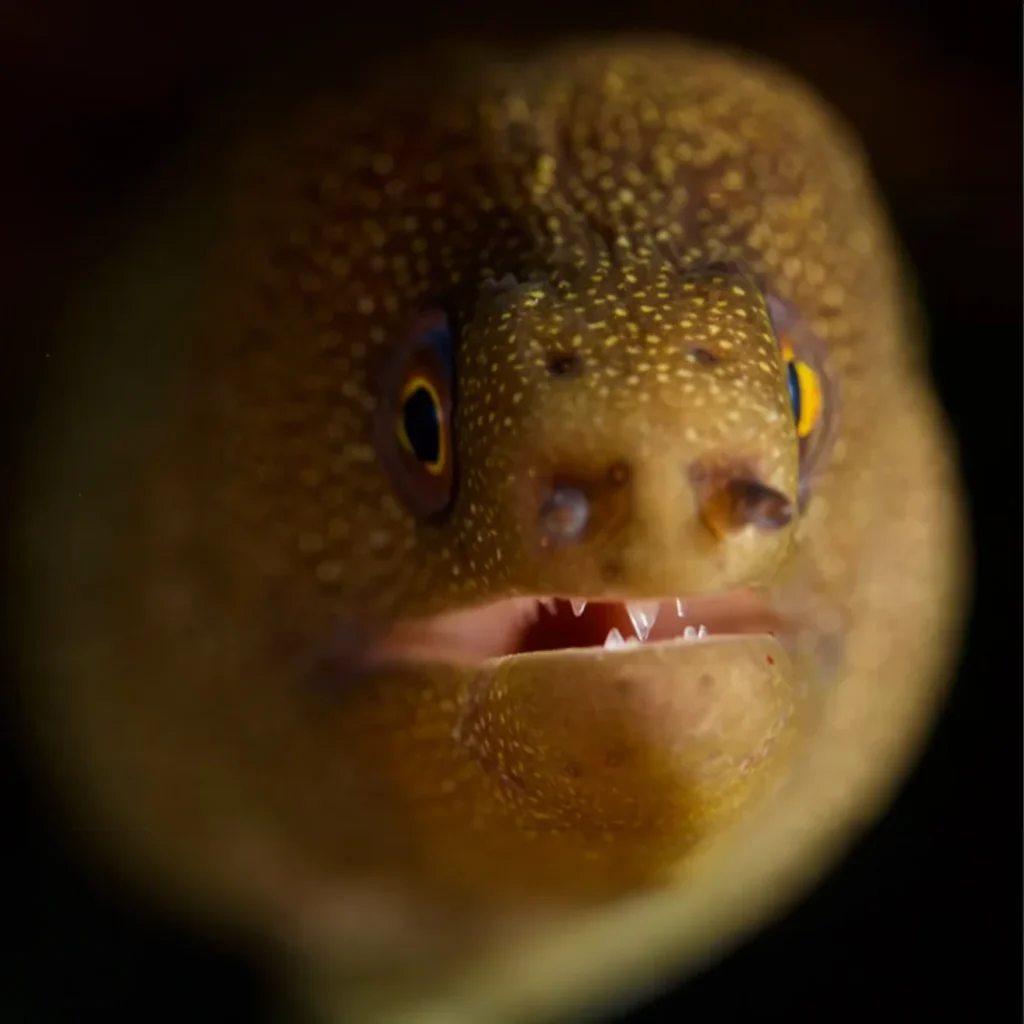
Armored Catfish (Hypostomus plecostomus and Pterygoplichthys spp.):
Armored Catfish, introduced from the Amazon Basin largely through the aquarium trade, have become notorious for their environmental impact in Florida. These fish erode shorelines with their nesting habits, disrupt natural habitats, and outcompete native species for food. Their hardy nature and adaptability to various water conditions have made them particularly challenging to manage, posing a significant threat to local ecosystems.
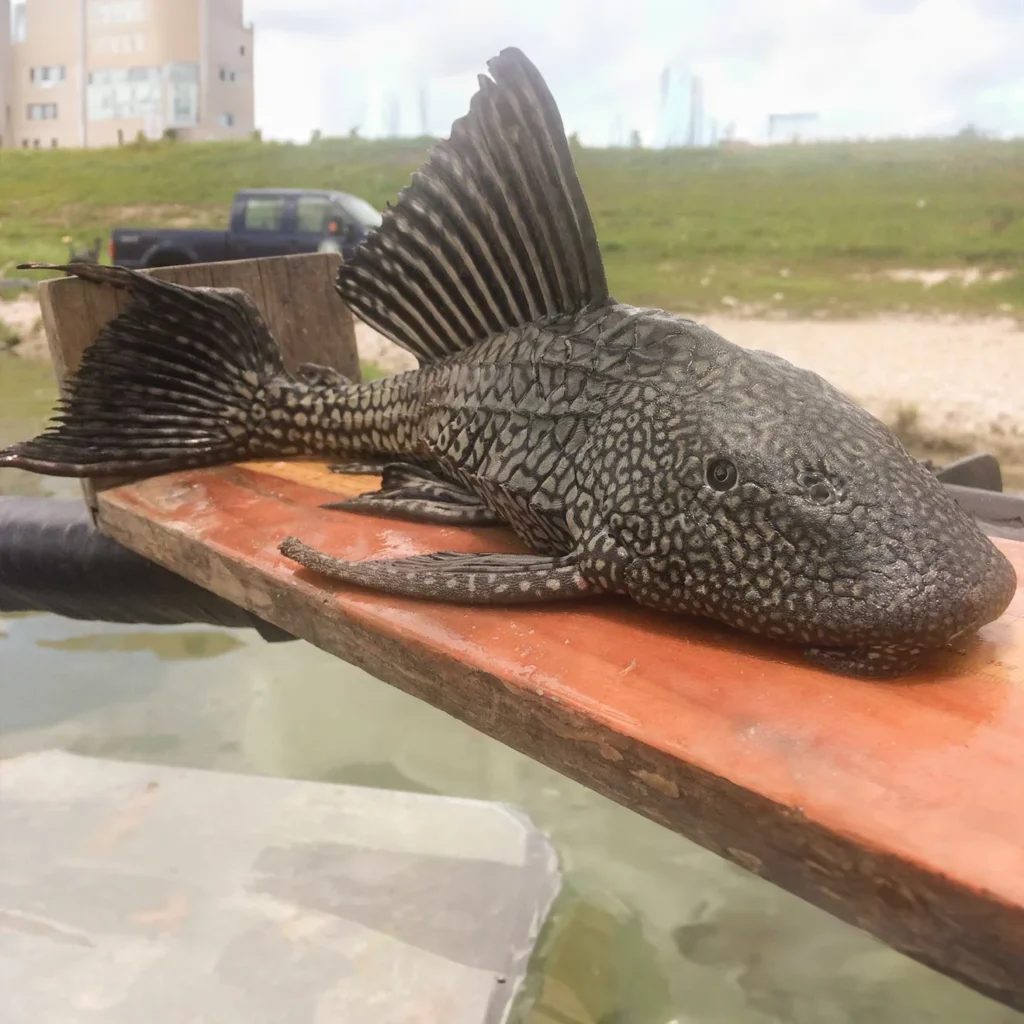
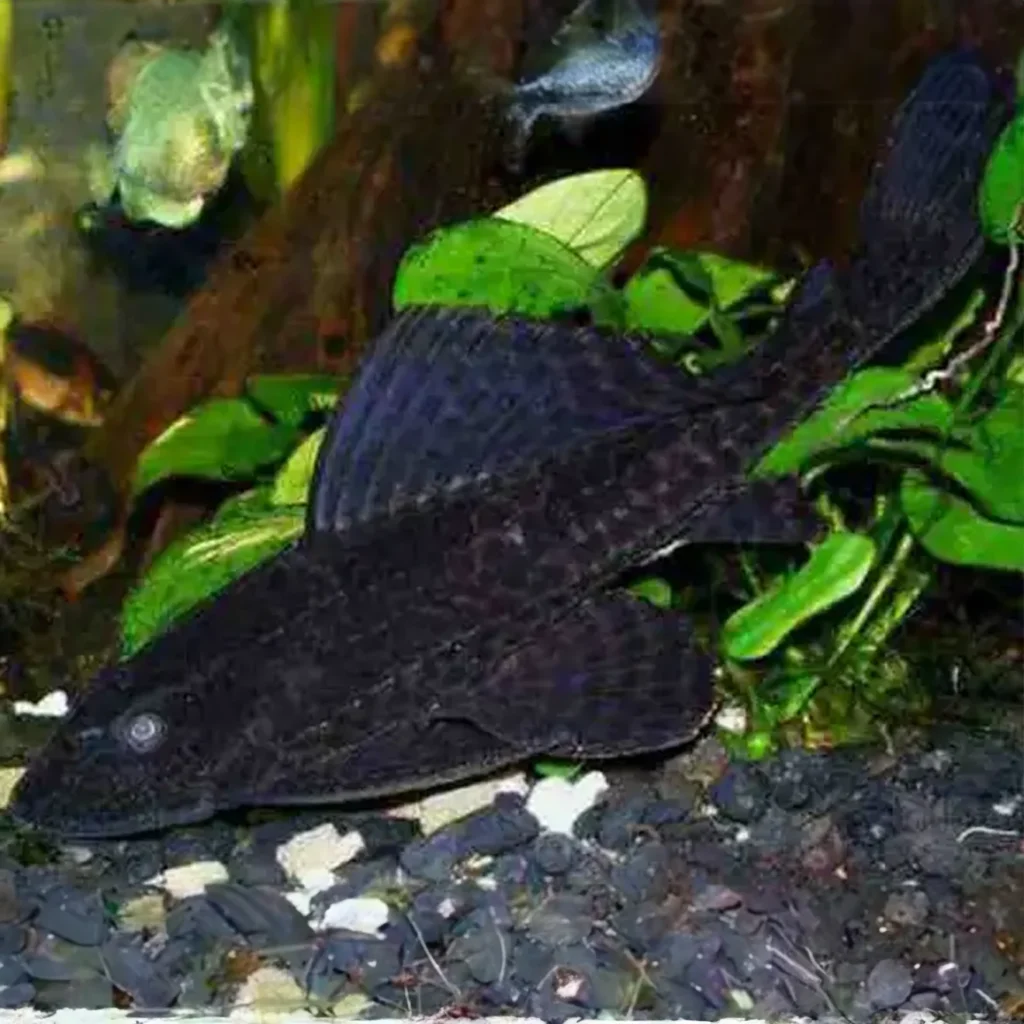
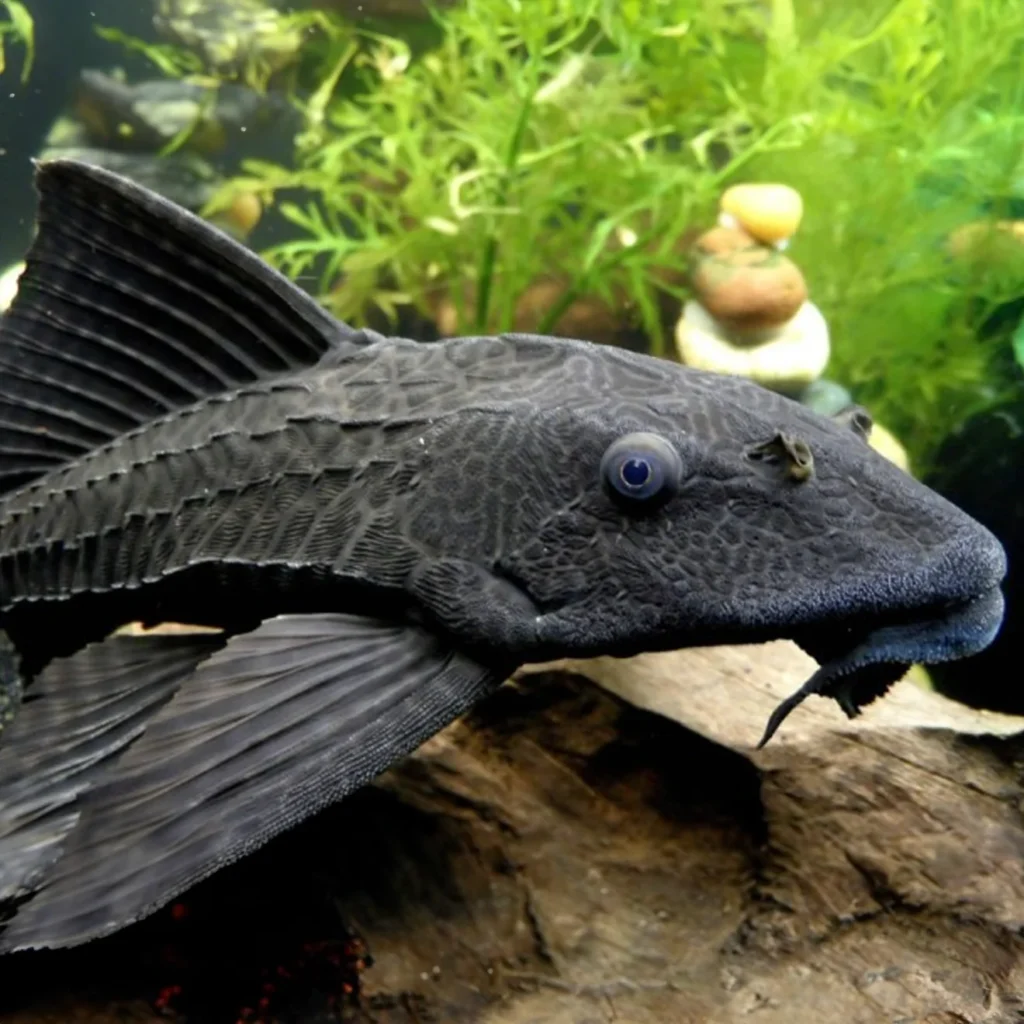
Bluegill (Lepomis macrochirus):
Although a favored sport fish, the Bluegill has established itself as an invasive species in areas outside its native range, including Florida. Its presence disrupts local aquatic ecosystems by competing with native fish for food and habitat, altering the ecological balance. Efforts to manage its population focus on maintaining the delicate equilibrium of freshwater ecosystems.
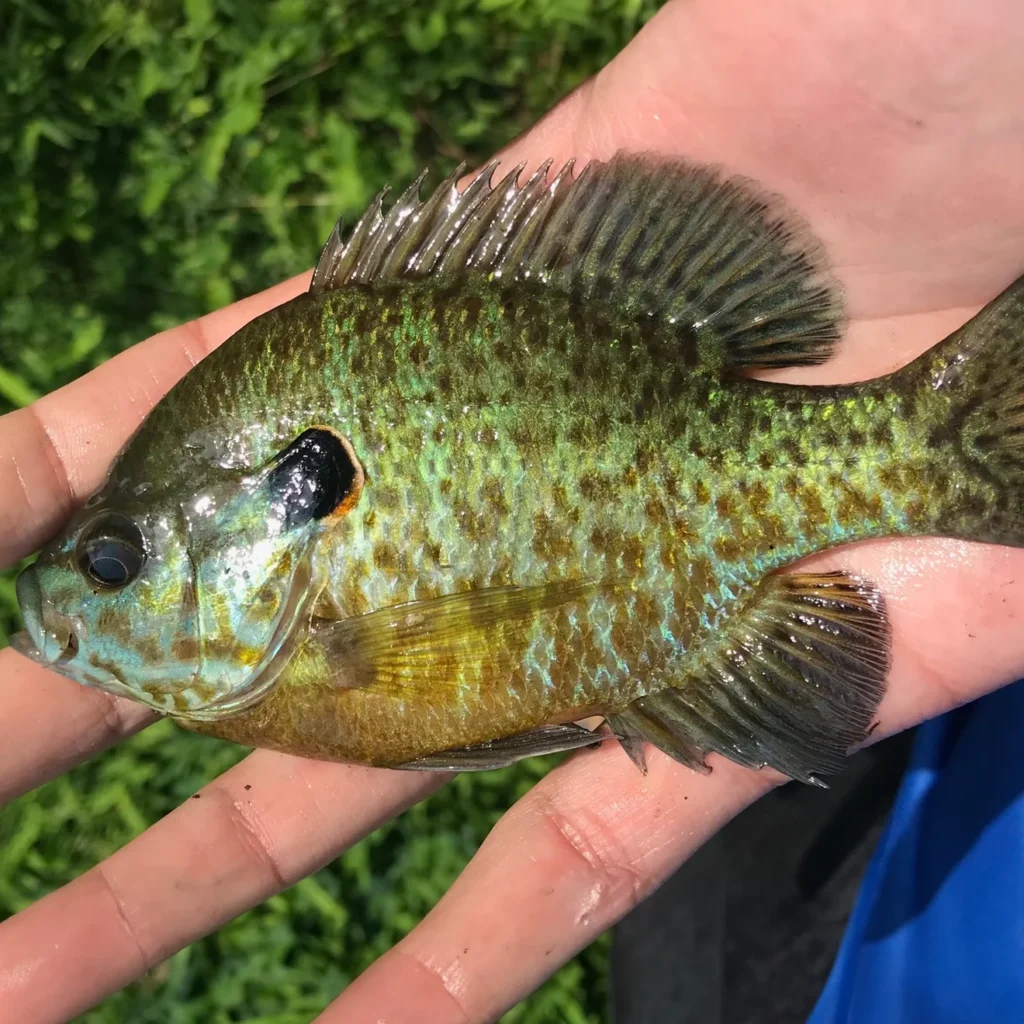
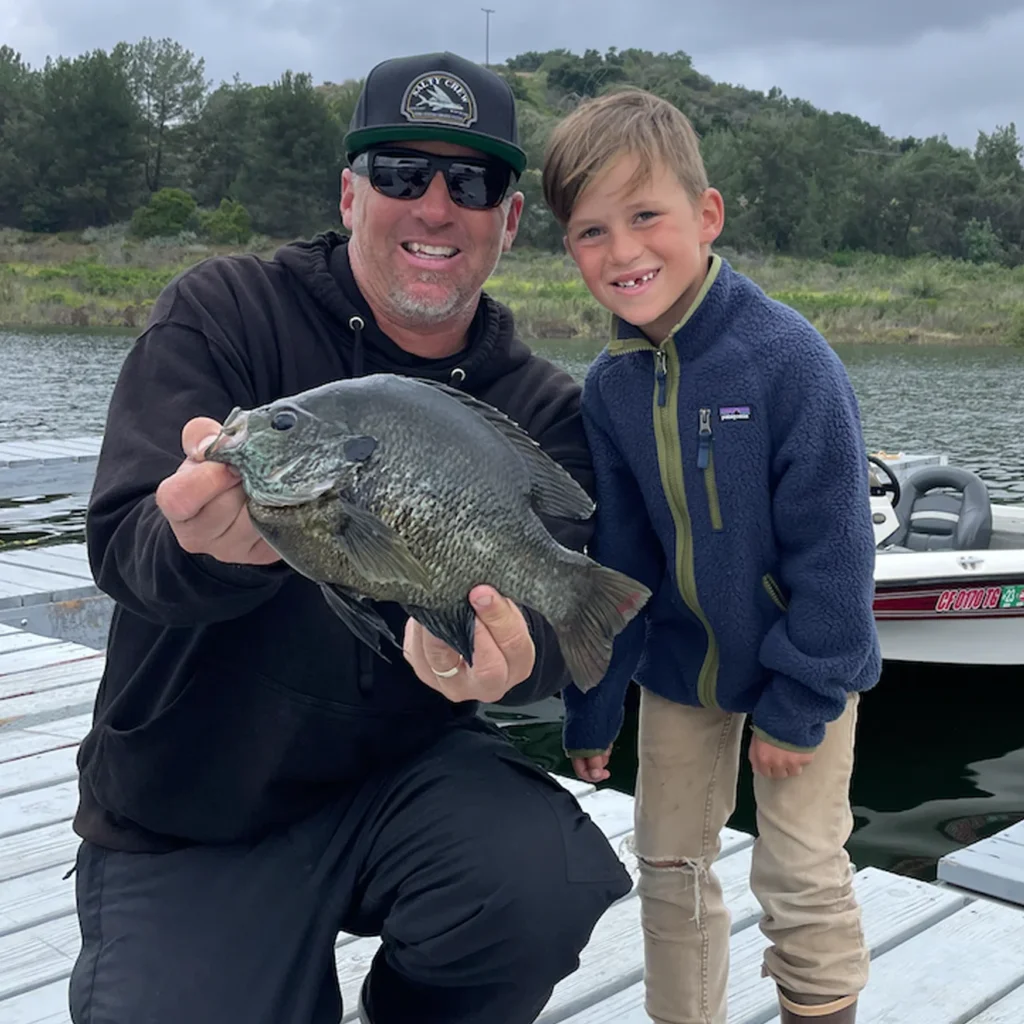

Blue Tilapia (Oreochromis aureus):
Originally from the Middle East and Africa, Blue Tilapia was introduced into Florida’s waterways for aquatic plant control. Its adaptability and prolific breeding have led it to become invasive, significantly impacting native fish populations and ecosystems. This species’ ability to thrive in various conditions poses challenges to managing its spread and protecting native biodiversity.
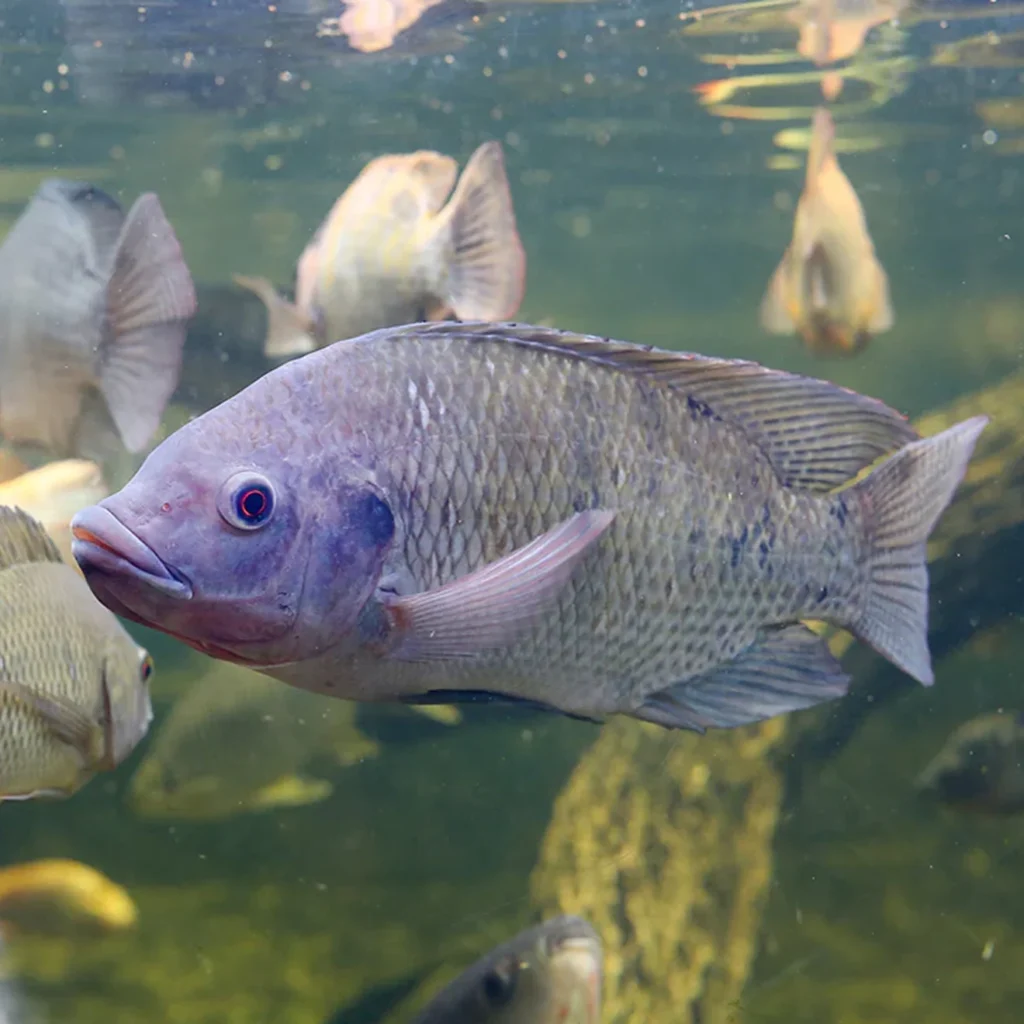
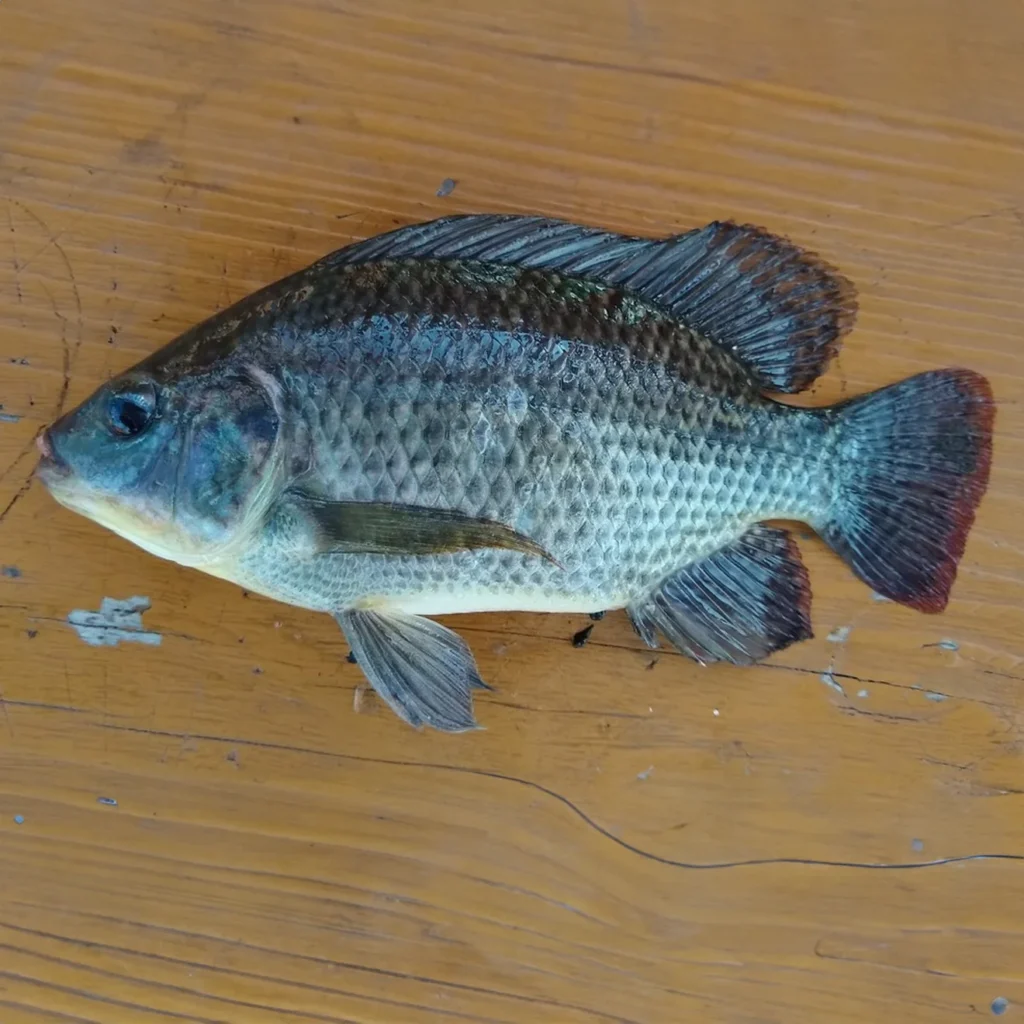

Clown Featherback (Chitala ornata):
The Clown Featherback, a large and nocturnal predator from Southeast Asia, has gained notoriety as an invasive species in new environments. Its introduction through the aquarium trade has led to established populations where it preys on native species, disrupting local aquatic ecosystems. Its size and predatory behavior pose significant challenges to native wildlife and conservation efforts.
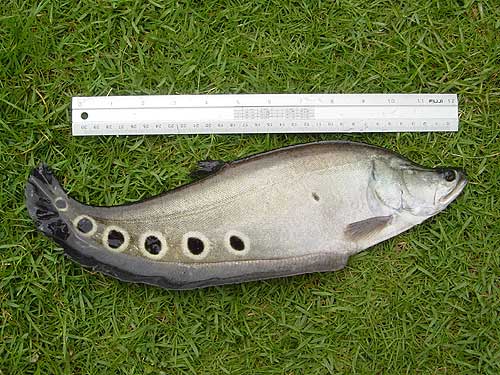



Lionfish (Pterois volitans and Pterois miles):
The lionfish, a striking but invasive species, has significantly impacted Florida’s coastal ecosystems. Originally from the Indo-Pacific, these predators have thrived in the Atlantic, Gulf of Mexico, and Caribbean waters, disrupting local marine life by preying on native fish and invertebrates, including economically important juvenile game fish like snappers and groupers. Their rapid expansion and voracious appetite pose a threat to the biodiversity and stability of coral reef ecosystems. Efforts to control their population include early detection and rapid removal strategies, as well as promoting lionfish as a food source to mitigate their impact and putting bounties on the capture of lionfish.
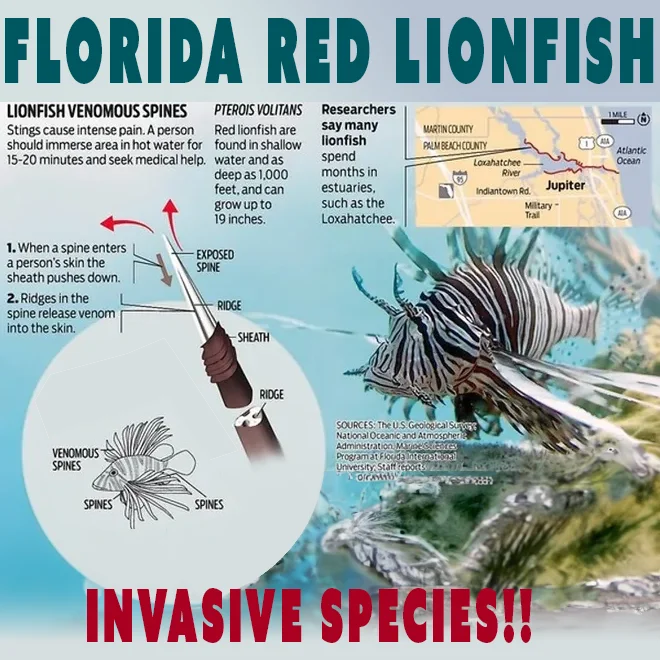
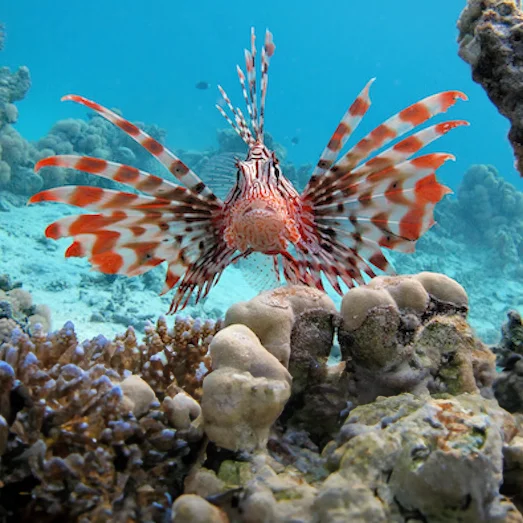

Oscar Fish (Astronotus ocellatus):
Native to the tropical waters of South America, the Oscar Fish has found a new, unwelcome home in Florida’s waterways. Popular in aquaculture, this species has established self-sustaining populations that impact local ecosystems by preying on native fish and competing for resources. Its adaptability to various environmental conditions makes it a resilient invasive species.
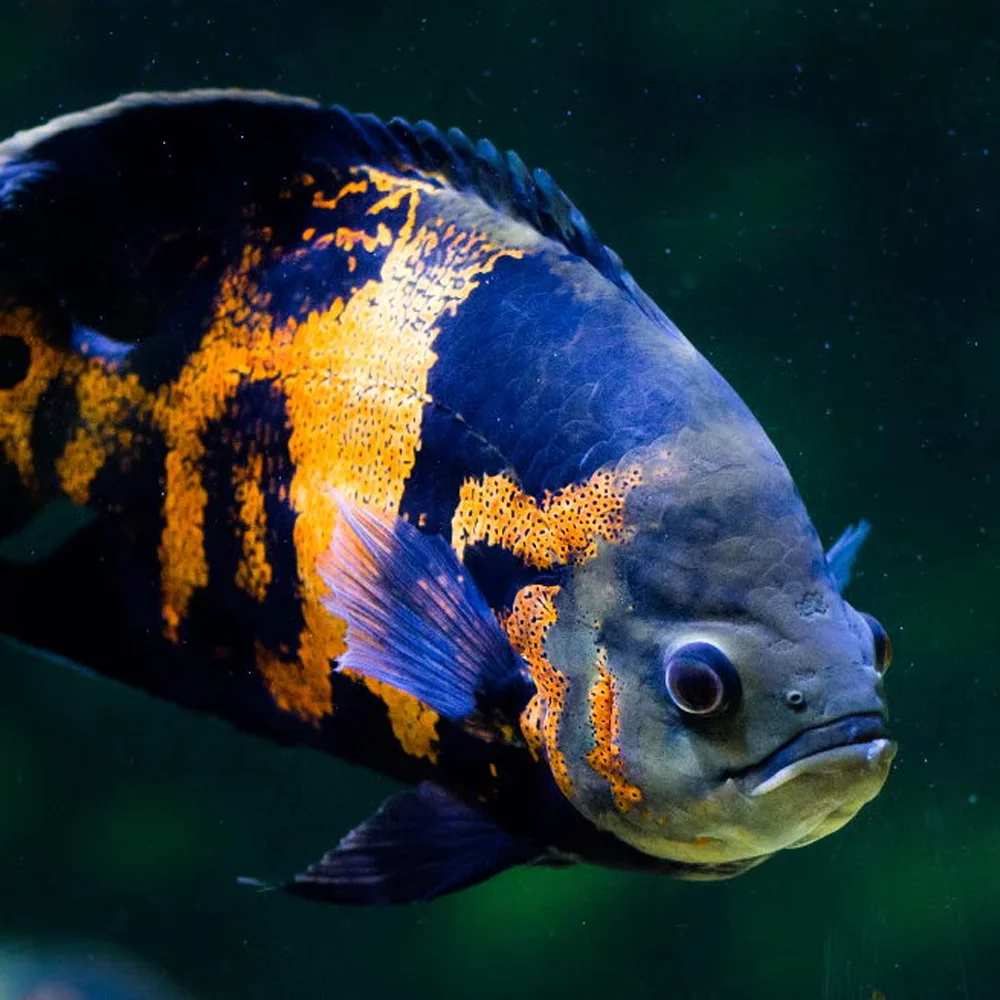
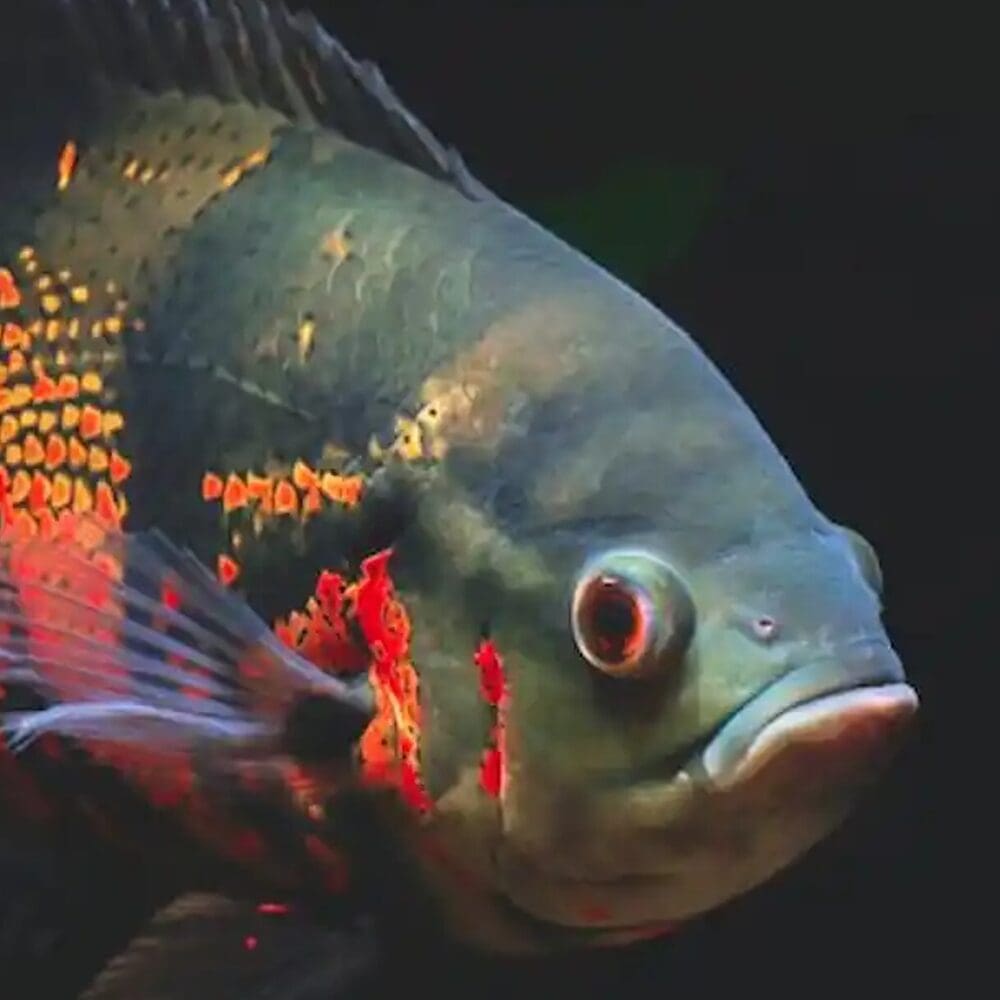
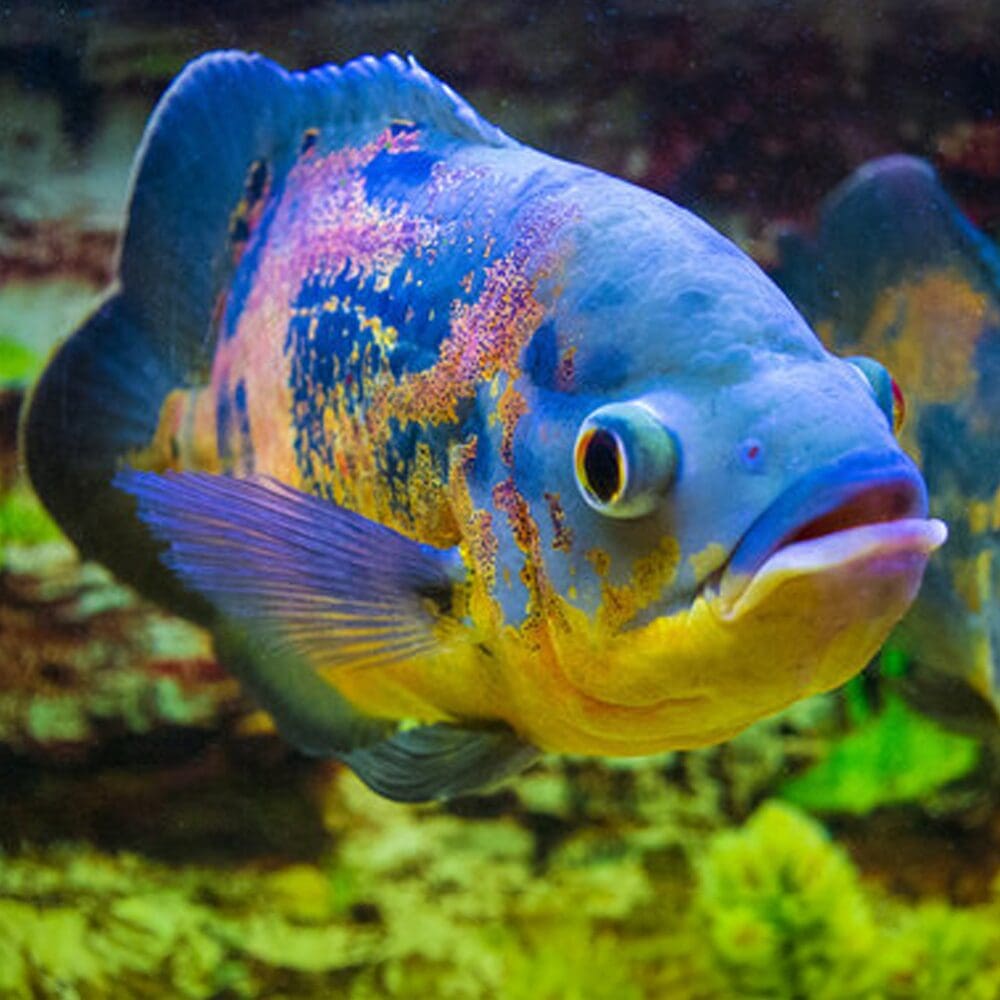
Snakeheads are air-breathing freshwater fishes, classified into two genera: Channa (snakeheads of Asia, Malaysia, and Indonesia) and Parachanna (African snakeheads). They are considered invasive species in the U.S., capable of threatening native fishes, recreational fishing, and aquatic ecosystems.
These predator from Africa and Asia, introduced through the live food fish market, are especially concerning due to their predatory nature and rapid reproduction.
Northern Snakehead (Channa argus):
From the genus Channa, the Northern Snakehead has gained attention for its invasiveness in North American waters.


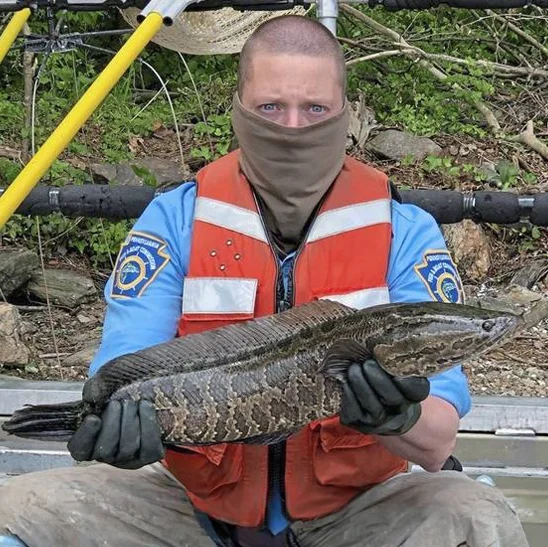
African Snakehead (Parachanna obscura):
From the genus Parachanna, the African Snakehead is primarily found in tropical Africa and known for its adaptability to different environments.
Walking Catfish (Clarias batrachus):
Hiling from Southeast Asia, the Walking Catfish poses a unique invasive threat due to its ability to ‘walk’ across dry land to colonize new water bodies. Introduced through accidental release, it disrupts local ecosystems by preying on native species and spreading parasites and diseases. Its terrestrial mobility and aggressive nature make it a particularly challenging invasive species to manage.



What’s being done about invasive marine species?
These invasive species disrupt Florida’s aquatic ecosystems by outcompeting native species for resources, altering food webs, and sometimes even leading to the extinction of native species. Efforts to manage and control their populations include public awareness campaigns, regulations on the aquarium trade, targeted removal efforts, and encouraging fishing of these species to help control their numbers.
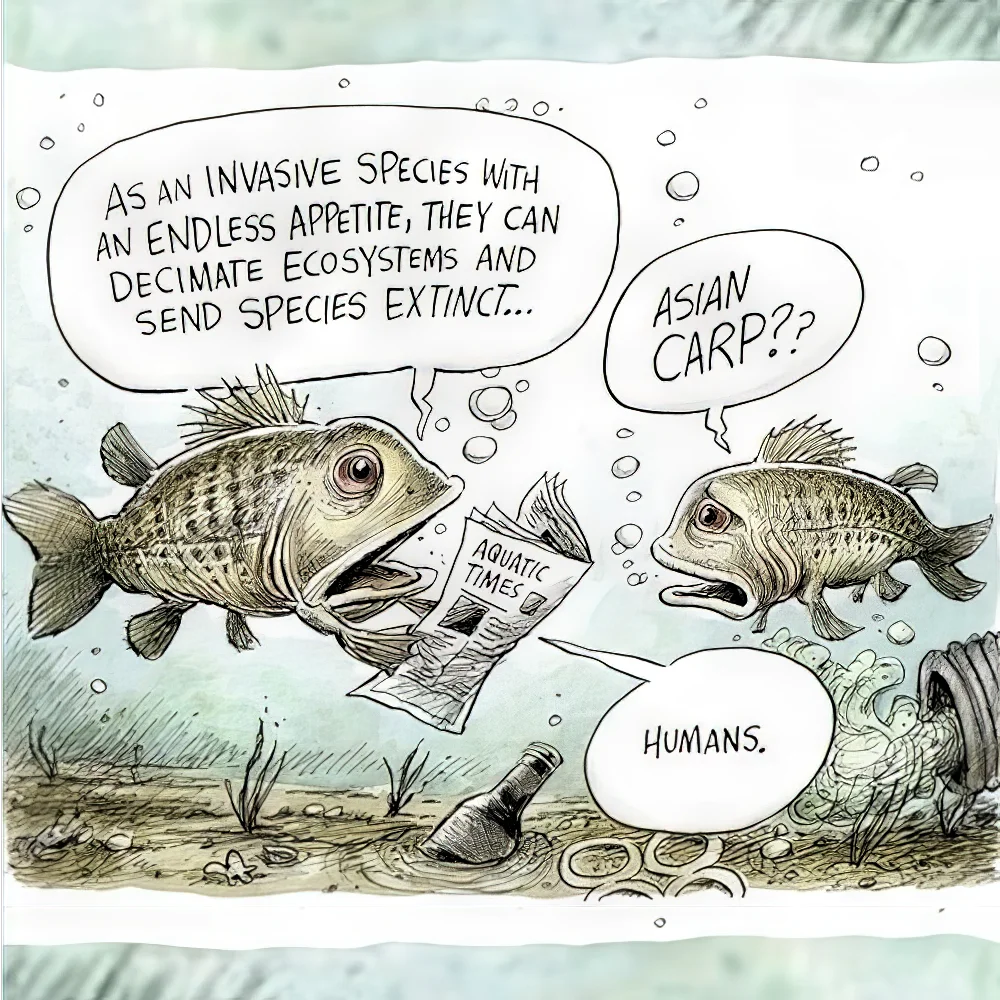
Your Role: Essential Measures for Boaters
As a boater, your actions are pivotal in the battle against invasive species in Florida’s precious aquatic environments. By adopting responsible boating practices, you can help safeguard these waters for future generations. Here’s how you can contribute:
Regular Inspection and Clean-up
Before launching and after retrieving your vessel, make it a habit to thoroughly inspect and clean your boat, trailer, and recreational equipment. Aquatic plants, mud, and small critters can cling to your gear and become inadvertent passengers to new locations. Use a high-pressure water jet, when available, to clean hard-to-reach areas and ensure no invasive species are tagging along. Allow your equipment to dry completely before visiting another water body, as this can kill off any unseen hitchhikers.
Effluent Management
Managing water on your boat is just as crucial. Invasive species can survive in the ballast water, bilge, and even in the water used to transport live bait. It’s vital to empty and clean these areas only at designated disposal stations to prevent the unintentional release of invasive organisms into new habitats. By doing so, you’re cutting off a major pathway for these species to travel and colonize new areas. Always refill with clean, treated, or local water to avoid introducing non-native species.
Stay Informed
Knowledge is your best defense. Regulations and recommendations are continuously updated as new information about invasive species becomes available. Familiarize yourself with the latest guidelines from local conservation authorities and participate in educational workshops if possible. Knowing which species are considered invasive in your area, and what new threats might be on the horizon, empowers you to act more effectively in preventing their spread.
Reporting Invasive Species
Your observations can make a difference. If you encounter an unfamiliar or known invasive species, report it to the local fish and wildlife authorities immediately. Provide as much detail as possible, including the location, number of individuals seen, and, if you can, photographs. Your vigilance can alert management authorities to new invasions early on, making control efforts more effective and less costly. For our fellow Floridians, that means calling the FWC’s (Florida Wildlife Commission) Invasive Species Hotline at 888-Ive-Got1 (888-483-4681) to report nonnative animals.
Find the Perfect Boat for Responsible Boating
With a better understanding of the threat invasive species present and how to prevent their spread, it’s now your responsibility to put this knowledge to use. Choose a boat that allows for easy cleaning and inspection to prevent the spread of invasive species. At Black Label Marine Group, we understand the importance of maintaining the balance of our marine ecosystems. Navigate to our Online Showroom of Boats to find your dream boat that’s perfect for responsible boating.
Remember, recreational boating isn’t just about cruising through the waves and soaking in the sun. It’s about protecting the precious ecosystems we enjoy. Let’s all chart a course for responsible boating.
For more interesting reads, cruise on over to our Blog Section.

